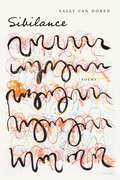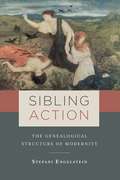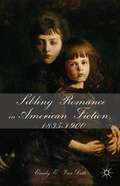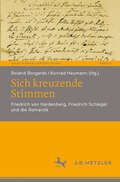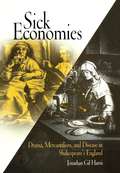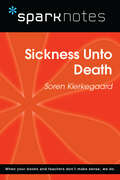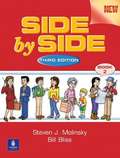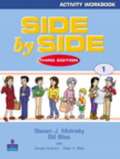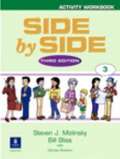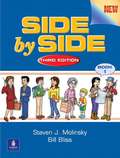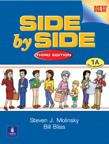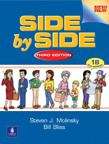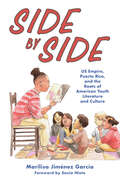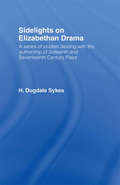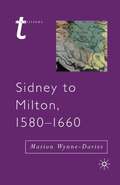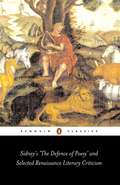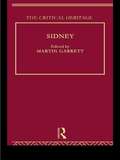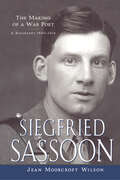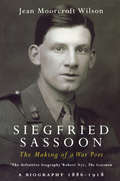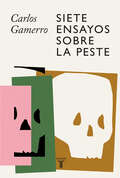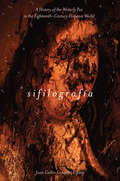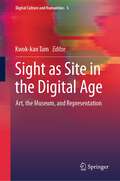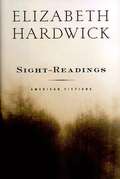- Table View
- List View
Sibilance: Poems
by Sally Van DorenThe word “sibilance” refers to pronunciations of the letter “s,” including the emission of a hissing or whistling sound. As the title of Sally Van Doren’s fourth collection of poetry, the word alerts readers to the sounds of language in the poems that follow in abecedarian order. Filled with wordplay, Van Doren’s poems vacillate between the extremes of joy and despair, by turns witty and chagrined, punning and reflective.The poems gathered in Sibilance aim to clarify their author’s ambivalence concerning living life and writing about it. Her unique investigations teem with distilled images encased in the language of irreverence and awe.
Sibling Action: The Genealogical Structure of Modernity
by Stefani EngelsteinThe sibling stands out as a ubiquitous—yet unacknowledged—conceptual touchstone across the European long nineteenth century. Beginning in the late eighteenth century, Europeans embarked on a new way of classifying the world, devising genealogies that determined degrees of relatedness by tracing heritage through common ancestry. This methodology organized historical systems into family trees in a wide array of new disciplines, transforming into siblings the closest contemporaneous terms on trees of languages, religions, races, nations, species, or individuals. In literature, a sudden proliferation of siblings—often incestuously inclined—negotiated this confluence of knowledge and identity. In all genealogical systems the sibling term, not quite same and not quite other, serves as an active fault line, necessary for and yet continuously destabilizing definition and classification.In her provocative book, Stefani Engelstein argues that this pervasive relational paradigm shaped the modern subject, life sciences, human sciences, and collective identities such as race, religion, and gender. The insecurity inherent to the sibling structure renders the systems it underwrites fluid. It therefore offers dynamic potential, but also provokes counterreactions such as isolationist theories of subjectivity, the political exclusion of sisters from fraternal equality, the tyranny of intertwined economic and kinship theories, conflicts over natural kinds and evolutionary speciation, and invidious anthropological and philological classifications of Islam and Judaism. Integrating close readings across the disciplines with panoramic intellectual history and arresting literary interpretations, Sibling Action presents a compelling new understanding of systems of knowledge and provides the foundation for less confrontational formulations of belonging, identity, and agency.
Sibling Relations and Gender in the Early Modern World: Sisters, Brothers and Others (Women and Gender in the Early Modern World)
by NAOMI J. MILLER AND NAOMI YAVNEHWhile the relationships between parents and children have long been a staple of critical inquiry, bonds between siblings have received far less attention among early modern scholars. Indeed, until now, no single volume has focused specifically on relations between brothers and sisters during the early modern period, nor do many essays or monographs address the topic. The essays in Sibling Relations and Gender in the Early Modern World focus attention on this neglected area, exploring the sibling dynamics that shaped family relations from the fifteenth through the seventeenth centuries in Italy, England, France, Spain, and Germany. Using an array of feminist and cultural studies approaches, prominent scholars consider sibling ties from a range of interdisciplinary perspectives, including art history, musicology, literary studies, and social history. By articulating some of the underlying paradigms according to which sibling relations were constructed, the collection seeks to stimulate further scholarly research and critical inquiry into this fruitful area of early modern cultural studies.
Sibling Romance in American Fiction, 1835-1900
by Emily E. VandetteThis study posits that the narrative of sibling love as a culturally significant tradition in nineteenth-century American fiction. Ultimately, Emily E. VanDette suggests that these novels contribute to historical conversations about affiliation in such tumultuous contexts as sectional divisions, slavery debates, the Civil War, and Reconstruction.
Sich kreuzende Stimmen: Friedrich von Hardenberg, Friedrich Schlegel und die Romantik (Neue Romantikforschung #8)
by Roland Borgards Konrad HeumannFriedrich von Hardenberg und Friedrich Schlegel verdanken wir zwei der berühmtesten Denkfiguren der Romantik: die ‚blaue Blume‘ und die ‚progressive Universalpoesie‘. Ein wichtiger Quellpunkt solcher Denkfiguren ist der Briefwechsel zwischen Hardenberg und Schlegel, der 2022 anlässlich ihres 250. Doppelgeburtstages in einer Ausstellungreihe im Deutschen Romantik-Museum, Frankfurt am Main, zu sehen war. Begleitend zur Ausstellung hat sich eine Ringvorlesung des Instituts für Deutsche Literatur, Frankfurt, mit dem Anteil Hardenbergs und Schlegels an der frühromantischen Theoriebildung auseinandergesetzt. Der vorliegende Band dokumentiert die Beiträge dieser Ringvorlesung. Der Briefwechsel zwischen Hardenberg und Schlegel bildet dabei den Ausgangspunkt der Überlegungen. Im Zentrum stehen dabei zunächst der Brief als Medium des Symphilosophierens sowie Religion und Republik als zwei zentrale Themen des Briefwechsel. Dann aber weist der Band auch über die Fragen, die die beiden Frühromantiker im brieflichen Austausch entwickeln, hinaus. Der Akzent liegt dabei auf Themenfeldern, die in der Forschung bisher weniger intensiv aufgegriffen wurde: die Idylle, die Ökologie und die Chemie.
Sick Economies: Drama, Mercantilism, and Disease in Shakespeare's England
by Jonathan Gil HarrisFrom French Physiocrat theories of the blood-like circulation of wealth to Adam Smith's "invisible hand" of the market, the body has played a crucial role in Western perceptions of the economic. In Renaissance culture, however, the dominant bodily metaphors for national wealth and economy were derived from the relatively new language of infectious disease. Whereas traditional Galenic medicine had understood illness as a state of imbalance within the body, early modern writers increasingly reimagined disease as an invasive foreign agent. The rapid rise of global trade in the sixteenth century, and the resulting migrations of people, money, and commodities across national borders, contributed to this growing pathologization of the foreign; conversely, the new trade-inflected vocabularies of disease helped writers to represent the contours of national and global economies.Grounded in scrupulous analyses of cultural and economic history, Sick Economies: Drama, Mercantilism, and Disease in Shakespeare's England teases out the double helix of the pathological and the economic in two seemingly disparate spheres of early modern textual production: drama and mercantilist writing. Of particular interest to this study are the ways English playwrights, such as Shakespeare, Jonson, Heywood, Massinger, and Middleton, and mercantilists, such as Malynes, Milles, Misselden, and Mun, rooted their conceptions of national economy in the language of disease. Some of these diseases—syphilis, taint, canker, plague, hepatitis—have subsequently lost their economic connotations; others—most notably consumption—remain integral to the modern economic lexicon but have by and large shed their pathological senses.Breaking new ground by analyzing English mercantilism primarily as a discursive rather than an ideological or economic system, Sick Economies provides a compelling history of how, even in our own time, defenses of transnational economy have paradoxically pathologized the foreign. In the process, Jonathan Gil Harris argues that what we now regard as the discrete sphere of the economic cannot be disentangled from seemingly unrelated domains of Renaissance culture, especially medicine and the theater.
Sickness Unto Death (SparkNotes Philosophy Guide)
by SparkNotesSickness Unto Death (SparkNotes Philosophy Guide) Making the reading experience fun! SparkNotes Philosophy Guides are one-stop guides to the great works of philosophy–masterpieces that stand at the foundations of Western thought. Inside each Philosophy Guide you&’ll find insightful overviews of great philosophical works of the Western world.
Side By Side Book 2 Third Edition
by Steven J. Molinsky Bill BlissSide by Side, Third Edition, by Steven J. Molinsky and Bill Bliss, is a dynamic, all-skills program that integrates conversation practice, reading, writing, and listening -- all in a light-hearted, fun, and easy-to-use format that has been embraced by students and teachers worldwide. This four-level program promotes native communication between students.
Side by Side Activity Workbook Book 1
by Steven J. Molinsky Bill Bliss Carolyn Graham Peter S. BlissThe Side by Side Activity Workbooks offer a variety of exercises for reinforcement, fully coordinated with the student texts.
Side by Side Activity Workbook, Book 3 (3rd Edition)
by Steven J. Molinsky Bill BlissThe Side by Side Activity Workbooks offer a variety of exercises for reinforcement, fully coordinated with the student texts. A special feature of the Activity Workbooks is the inclusion of GrammarRaps for practice with rhythm, stress, and intonation and GrammarSongs from the Side by Side TV videos. Periodic check-up tests are also included in the workbooks. Side by Side Plus is a standards-based and grammar-based English language program for adult and young-adult learners, The program builds students' general language proficiency and prepares them for their life-skill roles in the community, family, school, and at work.
Side by Side Book 1
by Steven J. Molinsky Bill BlissSide by Side, Third Edition, by Steven J. Molinsky and Bill Bliss, is a dynamic, all-skills program that integrates conversation practice, reading, writing, and listening -- all in a light-hearted, fun, and easy-to-use format that has been embraced by students and teachers worldwide. This four-level program promotes native communication between students ... practicing speaking together "side by side."
Side by Side Book 1A
by Steven J. Molinsky Bill BlissSide by Side, Third Edition, is the new and improved version of this dynamic, all skills program that integrates grammar and functions in a conversational approach all in a light-hearted, fun, and easy-to-use format that has been embraced by students and teachers worldwide.
Side by Side Book 1B
by Steven J. Molinsky Bill BlissSide by Side, Third Edition, is the new and improved version of this dynamic, all skills program that integrates grammar and functions in a conversational approach all in a light-hearted, fun, and easy-to-use format that has been embraced by students and teachers worldwide.
Side by Side: US Empire, Puerto Rico, and the Roots of American Youth Literature and Culture (Children's Literature Association Series)
by Marilisa Jiménez GarcíaWinner of the Children’s Literature Association’s 2023 Book AwardDuring the early colonial encounter, children’s books were among the first kinds of literature produced by US writers introducing the new colony, its people, and the US’s role as a twentieth-century colonial power to the public. Subsequently, youth literature and media were important tools of Puerto Rican cultural and educational elite institutions and Puerto Rican revolutionary thought as a means of negotiating US assimilation and upholding a strong Latin American, Caribbean national stance. In Side by Side: US Empire, Puerto Rico, and the Roots of American Youth Literature and Culture, author Marilisa Jiménez García focuses on the contributions of the Puerto Rican community to American youth, approaching Latinx literature as a transnational space that provides a critical lens for examining the lingering consequences of US and Spanish colonialism for US communities of color. Through analysis of texts typically outside traditional Latinx or literary studies such as young adult literature, textbooks, television programming, comics, music, curriculum, and youth movements, Side by Side represents the only comprehensive study of the contributions of Puerto Ricans to American youth literature and culture, as well as the only comprehensive study into the role of youth literature and culture in Puerto Rican literature and thought. Considering recent debates over diversity in children’s and young adult literature and media and the strained relationship between Puerto Rico and the US, Jiménez García's timely work encourages us to question who constitutes the expert and to resist the homogenization of Latinxs, as well as other marginalized communities, that has led to the erasure of writers, scholars, and artists.
Sidelights on Elizabethan Drama
by H.D. SykesFirst Published in 1966. Routledge is an imprint of Taylor & Francis, an informa company.
Sidney to Milton, 1580–1660 (Transitions Ser.)
by Marion Wynne-DaviesThis invaluable guide offers readers an accessible and imaginative approach to the literature of early modern Britain. Exploring the poetry, drama and prose of the period, Marion Wynne-Davies combines theory and practice, providing a helpful introduction to key theoretical concepts and close readings of individual texts by both canonical and less well-known authors. Amongst other things, Wynne-Davies discusses sixteenth- and seventeenth-century poetry in its political and cultural contexts, considers Renaissance drama in terms of performance space, and uses the early modern map to explain the prose works of writers such as Bunyan and Cavendish.
Sidney's 'The Defence of Poesy' and Selected Renaissance Literary Criticism
by Gavin AlexanderControversy raged through England during the 1570-80s as Puritans denounced all manner of games & pastimes as a danger to public morals. Writers quickly turrned their attention to their own art and the first & most influential response came with Philip Sidney's Defense. Here he set out to answer contemporary critics &, with reference to Classical models of criticism, formulated a manifesto for English literature. Also includes George Puttenham's Art of English Poesy, Samuel Daniel's Defence of Rhyme, & passages by writers such as Ben Jonson, Francis Bacon & George Gascoigne.
Sidney: The Critical Heritage (Critical Heritage Ser.)
by Martin GarrettFirst published in 1996. Routledge is an imprint of Taylor & Francis, an informa company.
Siegfried Sassoon: The Making of a War Poet, A Biography (1886-1918)
by Jean Moorcroft WilsonThis book encompasses the complete life and works of Siegfried Sassoon, from his patriotic youth that led him to the frontline, to the formation of his anti-war convictions, great literary friendships and flamboyant love affairs.
Siegfried Sassoon: The Making of a War Poet, A biography (1886-1918)
by Jean Moorcroft WilsonThis book encompasses the complete life and works of Siegfried Sassoon, from his patriotic youth that led him to the frontline, to the formation of his anti-war convictions, great literary friendships and flamboyant love affairs.
Siete ensayos sobre la peste
by Carlos GamerroLa primera historia cultural de la peste: un recorrido erudito y reflexivo por epidemias y pandemias en la literatura y las artes, de la mano de Carlos Gamerro, uno de los novelistas y ensayistas más prestigiosos de la actualidad. Uno de los propósitos de estos ensayos sobre la peste es entendernos mejor: la vivencia de las epidemias y pandemias acompañó a la humanidad desde siempre; conocer su expresión en la literatura y las artes sirve para tener una imagen más acabada de nosotros mismos. El recorrido por la historia de las epidemias y pandemias en la literatura y las artes -desde la Ilíada hasta las películas de muertos vivos- que Carlos Gamerro propone en este libro interpela persistente nuestros tiempo y experiencia contemporáneos. Aquí se exploran orígenes e ideas, fantasías y decisiones políticas derivadas de la consideración de la peste como castigo divino, daño de brujas, guerra o conspiración. Al mismo tiempo se releen las condiciones de posibilidad del surgimiento del Diario del año de la peste de Daniel Defoe, la influencia de la costumbre de usar a la peste como metáfora de otras calamidades, como la guerra y la ocupación en La peste de Albert Camus, o los goces prohibidos que habilita en el Decamerón de Boccaccio, Muerte en Venecia o El amor en los tiempos del cólera. Fruto de una de las voces más potentes y originales en la novela y el ensayo argentinos contemporáneos, esta obra exquisita por lo erudita e iluminadora por lo reflexiva y original se erige en verdadera historia cultural de la peste, y en ese gesto deja ver su vocación de clásico.
Sifilografía: A History of the Writerly Pox in the Eighteenth-Century Hispanic World (Writing the Early Americas)
by Juan Carlos González EspitiaSyphilis was a prevalent affliction in the era of the Americas’ colonization, creating widespread anxiety that is indicated in the period’s literature across numerous fields. Reflecting Spaniards’ political prejudices of the period, it was alternately labeled "mal francés" or "el mal de las Indias." Sifilografía offers a cultural history that traces syphilis and its consequences in the transatlantic Spanish-speaking world throughout the long eighteenth century. Juan Carlos González Espitia charts interrelated literary, artistic, medical, and governmental discourses, exploring how fears of the disease and the search for its cure mobilized a transoceanic dialogue that forms an underside of Enlightenment narratives of progress.Through a narrative revealing the transformation and retooling of ideas related to syphilis as a bodily contagion, González Espitia demonstrates the Spanish-speaking world’s crucial relevance to a global understanding of the period in the context of current reassessments of Enlightenment thought. Broad in its scope, the book incorporates an extensive corpus of medical treatises, literary essays, poems, novels, art, and governmental documents. The rich overlapping matrix of authors and texts broached subvert the idea of a homogeneous interpretation of syphilis and contributes to the rediscovery of the wide-ranging historical, cultural, and philosophical impact of this disease in the Spanish-speaking world. Sifilografía seeks to open a productive dialogue with other area studies about the disparate meanings of science and Enlightenment.
Sight as Site in the Digital Age: Art, the Museum, and Representation (Digital Culture and Humanities #5)
by Kwok-Kan TamThis volume presents a broad coverage of theoretical issues that deal with digital culture, representation and ideology in art and museums, and other cultural sites, offering new insights into issues of representation in the digitization of art. It critically examines the roles of museum and archives in the digital age and reexamines the intricate relations between sight and site in art, museums, exhibitions, theme parks, theatre performances, music videos, and films. The collection represents a multidisciplinary approach to the complex issues underlying the advent of technologies and digital culture. The rise of visual culture since the twentieth century can be accounted for by the advent of technology in film, TV, museum exhibitions, and the wide use of websites, but it can also be understood as a paradigmatic shift toward representation as a visual means to interpret culture, with new understandings of the site-sight dilemma and the co-implications in related tensions. Complicating the issue of representation is the rise of digital culture, as digital sites replace actual physical sites. This book explores how the virtual has replaced the actual, and in what ways, and to what effects, the digital has displaced the physical. With contributions by museum curators, communications scholars, visual artists, theatre artists, filmmakers, literary critics, and historians, this volume is of appeal to academics and graduate students in information science, art, media, performance, literary and cultural studies, and history. “The book binds together different concepts such as site, sight and digitalization in a very original way. It convincingly gathers contributions from academics and practitioners, artists and museum specialists. The chapters are theoretically well-founded, show an interesting breadth of content and are also dealing with current developments.”— Monika Gänssbauer, Professor of Chinese and Head of the Institute of Asian, Middle Eastern and Turkish Studies, Stockholm University, Sweden “The chapters raise important and latest questions and discussions on the impact of digital technology has on art, culture, creativity, representation and innovation. They are original in dealing with latest examples in recent years, especially during the pandemic, with reflections and philosophical discussions on the transformation digital culture undergoes in relation to human and posthuman contexts, with examinations of art works, archives and museum collections, exhibitions, theme parks, theatre performances, films and music videos that encompass cultures from ancient to contemporary, from the West to the East, and from physical to digital.”— Jack Leong, Associate Dean of Research and Open Scholarship, York University Libraries, Toronto, Canada
Sight-Readings: American Fictions
by Elizabeth HardwickIt is only in a country where newness and change and brevity of tenure are the common substance of life," wrote Henry James, "that the fact of one's ancestors having lived for a hundred and seventy years in a single spot would become an element of one's morality." Newness and rootedness are the twin poles of Sight-Readings, Elizabeth Hardwick's brilliant new collection of essays. (Her first, Seduction and Betrayal, was nominated for the National Book Award.) Hardwick's focus here is on American writers, at home and abroad, and especially women, as writers and as characters: Edith Wharton, Djuna Barnes, Gertrude Stein, Mary McCarthy, Elizabeth Bishop, Katherine Anne Porter, and Joan Didion, among others. In sections on Old New York, Americans Abroad, and Fictions of America, Hardwick considers writers and their landscapes, real and imagined. Her essays on Edith Wharton and Henry James illuminate aspects of their inventions of New York. From there she takes us to the Paris of Gertrude Stein and Djuna Barnes, into the hermetic world of Boston Transcendentalism, and on to the suburbs of John Cheever, the America of Philip Roth and John Updike, and the restless expanses of Richard Ford and the Prairie poets. Elizabeth Hardwick has achieved a permanent place in American letters for her sharp and elegant criticism. Her essays on American writers are themselves a work of literature.
